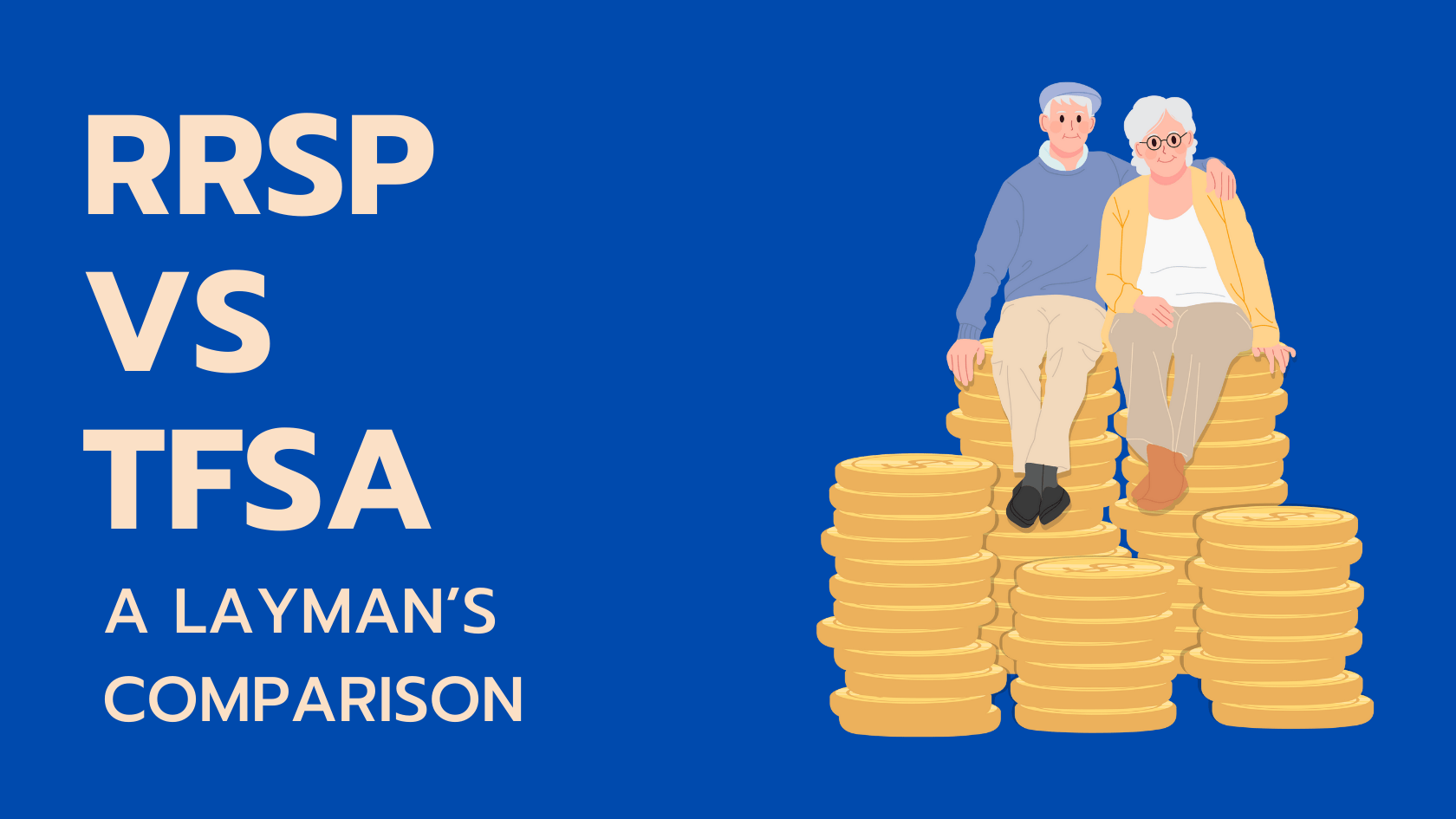RRSP vs TFSA is a topic of endless debate ever since the TFSA was introduced in Canada. Here is a tabular comparison from a layman’s perspective.
Key Comparison Points
Feature RRSP (Registered Retirement Savings Plan) TFSA (Tax-Free Savings Account) Contribution Limits 18% of previous year’s earned income up to annual maximum ($31,560 for 2024), plus unused room from previous years Annual limit ($7,000 for 2024) plus unused room since 2009 or age 18, whichever is later Tax Treatment of Contributions Tax-deductible from current year’s income No tax deduction for contributions Tax Treatment of Growth Tax-deferred growth Tax-free growth Tax Treatment of Withdrawals Fully taxable at marginal rate Completely tax-free Impact on Government Benefits Withdrawals count as income and may affect GIS, OAS No impact on government benefits Contribution Room After Withdrawal No replenishment of room Full amount of withdrawal added back next calendar year Age Limits Must convert to RRIF by end of year you turn 71 No age limit Spousal Contributions Allowed, with special attribution rules Not applicable (each person needs their own TFSA) Foreign Withholding Tax US dividends exempt from withholding tax US dividends subject to withholding tax Estate Planning Full value taxable at death unless transferred to spouse Tax-free transfer to beneficiaries
Optimal Usage Strategies
Life Phase RRSP Strategy TFSA Strategy Early Career (Lower Income) Limited use – save contribution room for higher-income years Primary savings vehicle – maximize contributions Peak Earning Years Maximum contributions to reduce high marginal tax rate Secondary priority after RRSP is maximized Pre-Retirement Begin planning withdrawal strategy Consider as tax-free emergency fund Retirement Strategic withdrawals to minimize tax impact Flexible withdrawals with no tax consequences
Withdrawal Strategies and Considerations
Aspect RRSP TFSA Emergency Withdrawals High tax impact, permanent loss of contribution room No penalties, room restored next year Withdrawal Flexibility Limited by withholding tax (10-30%) Complete flexibility, no withholding tax Recontribution Rules Not allowed (except for HBP and LLP) Withdrawal amount added to next year’s room Impact on Other Income Can trigger OAS clawback No impact on other income-tested benefits
Example: After-Tax Comparison of RRSP vs TFSA
Assuming $10,000 contribution at 40% marginal tax rate, 6% annual return over 25 years, and 30% tax rate at withdrawal:
Metric RRSP TFSA Initial Contribution $10,000 $10,000 Tax Refund/Cost $4,000 refund No refund Net Cost to Contributor $6,000 $10,000 Value After 25 Years $42,919 $42,919 Tax on Withdrawal $12,876 (30%) $0 Net Proceeds $30,043 $42,919 Effective Return 6.7% after tax 6% tax-free
RRSP vs TFSA – Special Considerations
Feature RRSP TFSA Home Buyers’ Plan Up to $60,000 withdrawal allowed (after April 16, 2024 ) Can withdraw any amount Lifelong Learning Plan Up to $20,000 in total ($10,000 in a year ) No special provisions needed Creditor Protection Generally protected from creditors Protection varies by province US Tax Implications Recognized as retirement account May have complex reporting requirements
Strategic Recommendations
Income Level Based
High Income: Prioritize RRSP
Low Income: Prioritize TFSA
Variable Income: Use TFSA in low-income years, RRSP in high-income years
Life Stage Based
Young Professionals: Build TFSA first
Peak Earning Years: Maximize RRSP
Near Retirement: Balance both for tax-efficient withdrawals
Risk Management
Emergency Fund: TFSA preferred
Long-term Retirement: Both suitable
Business Owners: Consider RRSP for creditor protection
We hope this helps giving you a basic overview of RRSP vs TFSA comparison and plan your tax-sheltered savings strategies accordingly.
Still got questions? Reach out to us for help here
